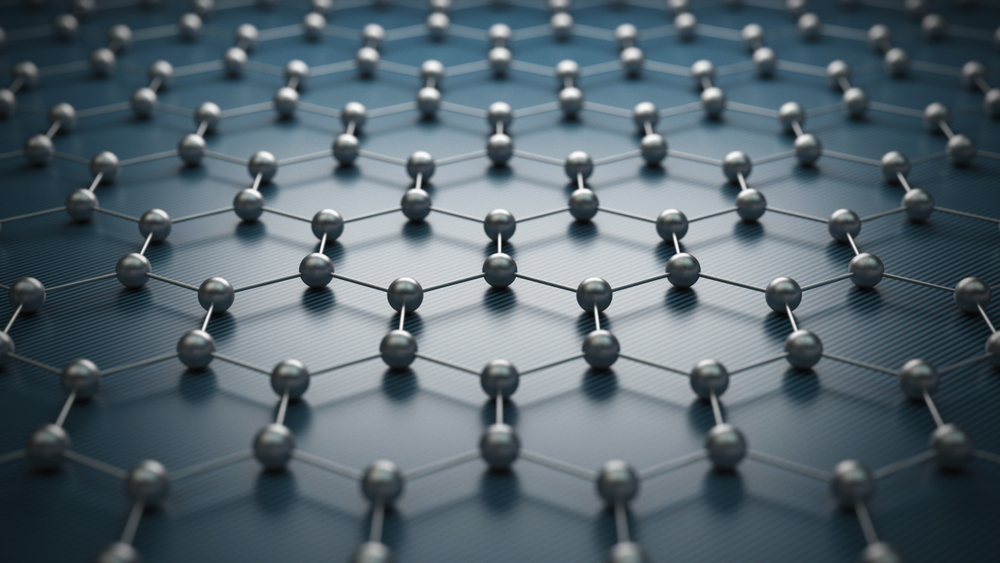
Image Credit: koya979/Shutterstock.com
A team of researchers from Columbia University has stacked a monolayer of graphene on top of a bilayer of the same single-atom-thick sheet of carbon allotrope. The scientists discovered that their triple stack system unlocked new quantum mechanical states and a new form of magnetism.
An article published in the latest edition of the journal Nature, published on 12 October 2020, details the team’s research.
The findings represent the latest development in an ongoing quest first undertaken by material scientists, physicists, and engineers 15 years ago when an atom-thick sheet of graphene was successfully cleaved from a material graphite block. This quest entails unlocking all the properties of this wonder material that is thin, flexible, strong and acts as a semiconductor — qualities that make it ideal for a broad spectrum of electronic devices.
The team was inspired by recent experiments that have found that interactions between electrons in twisted bilayers of graphene stacked in fours give rise to an array of novel electronic states.
The team questioned what would happen if the graphene was arranged in a twisted three-layer system. It found that by varying the number of graphene layers, it could endow its composite material with exciting new properties that have never been observed before.
Three’s Company for Graphene Layers
To develop its triple-layer graphene material, the team — led by Cory Dean, a professor of physics at Columbia University — placed a monolayer sheet of graphene onto a bilayer sheet and twisted the stack by 1 degree.
At temperatures a few degrees above absolute zero, Dean — with help from Assistant Professor Matthew Yankowitz and Professor Xiaodong Xu, both in the departments of physics, and materials science and engineering at the University of Washington, as well as graduate students Shaowen Chen, and Minhao He — observed that interactions between electrons in the stack gave rise to insulating states.
The researchers also discovered that they could manipulate and control these states by applying an electric field across these sheets. Repeated testing showed that the direction of the applied electric field was of vital importance in this manipulation.
An electric field pointed towards the monolayer graphene sheet component of the material induced behavior in the system that resembled a twisted bilayer graphene sheet. When the team flipped the field applying it in the opposite direction and towards the bilayer element, they discovered the behavior of the system also flipped — with it beginning to act like a twisted double bilayer (four layers in total) graphene structure.
The more surprising element was the discovery of a novel form of magnetism in a traditionally non-magnetic material.
Find out more: Nanomaterial equipment available on the market today
New Form of Magnetism Puts Scientists in a Spin
Previous research has demonstrated that when two layers of bilayer graphene are twisted with respect to each other at a ‘magic angle’, the electrons in that system become strongly correlated — resulting in some exotic electronic phases — including a new magnetic state.
This is remarkable because pure carbon is not usually magnetic. The fact that magnetism can be induced in graphene by arranging it in a particular way and twisting the resultant arrangement is extraordinary.
However, the team's magnetism is not ‘traditional’ magnetism, as it arises from a ‘collective swirling’ of correlated electrons.
This mimics a form of magnetism recently discovered in graphene structures resting on crystals of boron nitrate. The team observed the effect of boron nitrate's presence, which tells them that this magnetism can be induced in much simpler systems.
The team also observed some interesting topological effects within the tri-layer graphene stack. The team compares the topological arrangements observed to the variety of knots tied in a rope. As in different knots, these different topologies can serve many purposes.
The team points out how different topologies in the graphene tri-layer system could be of particular use in information technology, holding vital applications in the implementation of quantum computing and energy-efficient data storage.
The team will concentrate on further experiments on their platform to better understand the states they have induced. For their study of tri-later graphene, they conclude, this is just the beginning.
References and Further Reading
Chen, S., He, M., Zhang, Y. et al. (2020) ‘Electrically tunable correlated and topological states in twisted monolayer–bilayer graphene,’ Nature. Phys, https://doi.org/10.1038/s41567-020-01062-6
Disclaimer: The views expressed here are those of the author expressed in their private capacity and do not necessarily represent the views of AZoM.com Limited T/A AZoNetwork the owner and operator of this website. This disclaimer forms part of the Terms and conditions of use of this website.